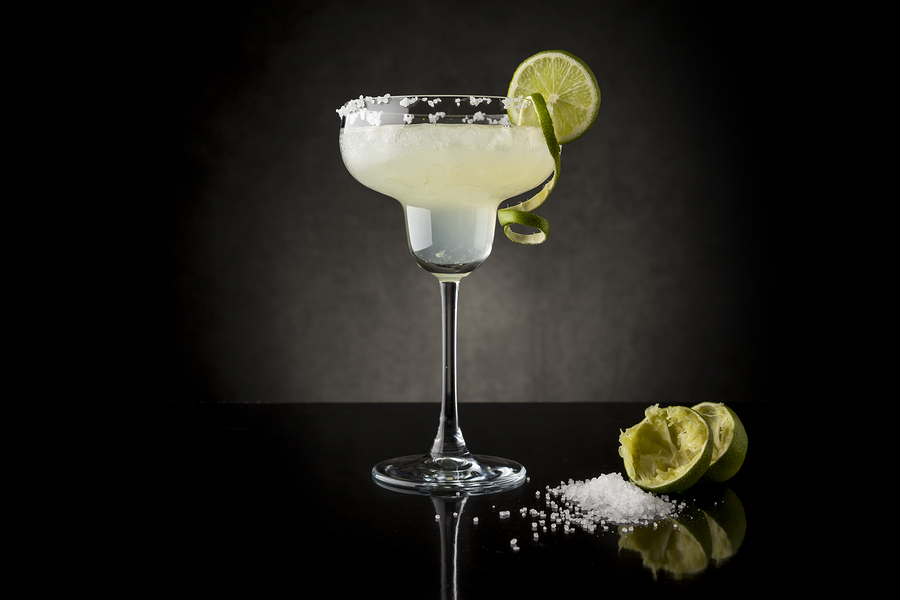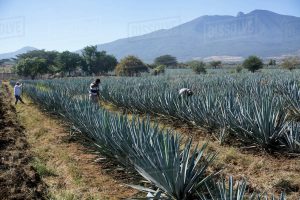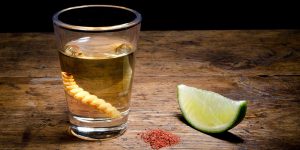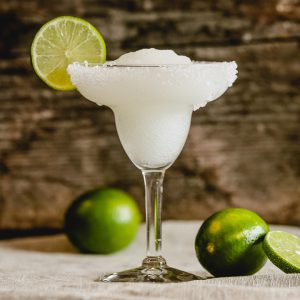

WORDS BY MATT MUGAVERO
![]()
NOT YOUR COLLEGE TEQUILA
Don’t even try to deny it! We all have them buried in our closet! You, I and the neighbor next door have at least one of those completely ridiculous, insanely childish, and totally outrageous stories that go hand in hand with a certain type of liquor. Yes, I am talking about that liquid fool’s gold: “tequila”.
Why do we get so deeply involved with a bottle of tequila and end up regretting it? Well, it is a simple answer. You actually think that you are tough enough, but in reality, you are not, nobody is. The tequila in the middle of these outrageous stories is usually so bad and so offensive that it rivals most embalming fluids. It is made of the poorest quality ingredients and with some very questionable tactics. The liquid poison is most always packaged in a cheap plastic container made specifically to save on cost and designed to bounce off the hardwood floor when dropped, which is certain to happen as soon as the brain slowly ignores the bodies extremities.
Since the booze tastes so horribly bad, we dare one another to handle the 1.5oz without hesitation or any lame excuses. We down the liquid with such bravery, all the while holding a stern appearance and praying to our God that one of us will soon quit all this nonsense. One after another, the nasty liquid chases down your throat, never considering the POWER that this liquid fool’s gold packs. A minimum of 80 proof adds up and continues to add up, without any regard to fundamental mathematics of the human body. That is until…BAMMMMM, it hits you. “Down Goes Frazier!” says a famous sports caster. You make the personal and public oath to swear off this nasty stuff to all that care to listen. We have all done it, said it, and declared it. You build the strength to kneel before the Gods proclaiming, “NEVER AGAIN, NEVER AGAIN,” as these commonly repeated words echo off the white porcelain bowl. How tough are you now?
THE GOOD STUFF
By now, you are chuckling at one of your very own bad tequila stories and strengthening your oath to “never again” drink tequila. But please allow me to introduce some food for thought and perhaps get you to reconsider. Your horrible memories of the morning after headache and the all-day nausea are most definitely caused by the cheap, mis-represented, bottom shelf tequila often celebrated at college gatherings. What if I was to tell you that quality tequila made from the best ingredients may treat your body a bit better and perhaps help you to avoid the dreaded hangover. That’s right. Higher quality tequila enjoyed within moderation will not give you that miserable morning after experience. When you explore top shelf tequila, you will experience so many different expressions of agave and the interesting nuances of how a master distiller will process and age his/her distillate.
ADULT TEQUILA

First and foremost, REAL tequila must be made from distilling the plant core (pina or heart) of the blue agave plant. Blue agave looks like a cactus with spiked hair but it’s not officially a cactus. It resides in a floral category specifically named Monocots. Unfortunately, the best blue weber agave takes up to 8 years to mature before harvesting. This means the good tequila is becoming more and more difficult to get. It also must be fully processed, “farm to bottle” from the state of Jalisco, think Champagne region of France. There are also a few other municipalities in Mexico that have a license to process the real thing, however the Cartel must get their cut first before any tequila hits the streets. I am kidding of course. Good tequila is always labeled with an official declaration of 100% Puro Agave on the front of the bottle. Bad tequila companies will try and trick you by stating “Blue Agave” on the bottle but fail to post the ever important 100% alongside. Sub- standard tequila will have 51% Agave Juice printed on the bottle in attempt to establish credibility. However, the manufacturer will then add fillers, coloring, rum, sugar water, vodka or whatever is under the kitchen sink to fill the bottle and still call it tequila. Really, no joke, if the bottle does not say 100% Blue Agave, then you could be drinking 49% of just about anything from Mexico.
The next thing you should know about tequila is that it may be good for you, within moderation of course. Researchers say the minerals in blue agave can help the body to better absorb calcium and magnesium both of which are great for strengthening of bones. Scientists have also discovered that the agave in tequila can help to keep blood sugar levels low, which is great for the battle against diabetes. Similarly, agave produces a hormone that tricks your stomach into feeling like it’s full for a longer period. This will help keep the late-night food cravings away and those unnecessary calories that pile on after midnight. Furthermore, Mexican doctors were recommending a tequila cocktail (.5 oz tequila blanco, .5 oz agave nectar, .5 oz orange juice) to fight colds not too long ago before modern medicine came along. So, we can all forget that “apple a day, keeps the doctor away” slogan. Just drink good tequila. “A shot a day will keep the doctor away”.
TIMING IS EVERYTHING

The better brands that have been in business for a while most always offer various categories for you to pick from. The categories distinguish themselves by how much time the spirit ages in a white oak barrel taking on the flavoring and coloring from the barrel. The clear liquid, or Blanco category, is tequila straight from the distilling process into the bottle. Here you will taste strong agave and a touch of alcohol nose that makes up exactly what the distiller was going for at production. The Reposado (meaning rested) is tinted slightly gold in color which come from the raw tequila soaking in white oak barrels for at least 2 months and up to 1 year. Even with this short aging process, the reposado tequila will soften and smooth out the alcohol nose making this category a perfect match for a margarita or a shot. With more than 1 year of barrel aging, the Anejo category of tequila is more like a good whiskey with deep characteristics of vanilla and floral notes. This is when you might be inclined to pour a small amount over ice and sip slowly with a good hunting dog at your feet. Fortunately for consumers, there is no better or worse category of tequila. One is not better than the other. Unlike scotch or bourbon where years do matter, tequila is vastly different in that the application of the spirit determines the category. Blanco, Reposado or Anejo, are all good choices as long as it’s 100% agave.
THIS WORM IS NOT FOR FISHING

There is a national myth out there in the public that needs to be clarified. According to Mexican law, legitimate Tequila will never have a bloated drunken worm laying silently at the bottom of a bottle.
This high-octane worm is the larvae of a maguey moth known locally as the gusano de maguey. He starts his life on the agave plant and feeds exclusively off the plant in both the agricultural and wild settings. Only a few of the lucky ones make their way to the bottom of a mezcal bottle and find their final destiny at some random college frat party.
There are so many rumors as to why the worm is placed in the bottle. Some say there is “great luck” to those who get to shoot the very last of the bottle to include the worm. I beg to differ. Others say it’s a sign of respect to the culture and farmers of Mexico in which you are toasting to the ancestors of long ago. And yet some say it is a simple marketing ploy to promote the mezcal variant.
As mentioned, Mezcal is produced from the agave plant, but unlike tequila, it can be made from any one or more of the 39 species of agave. Mezcal is not for the faint of heart as it usually comes in a higher proof landing somewhere around 90-100. Furthermore, there are no locale restrictions on where it can be farmed, produced and bottled. However, the most interesting difference between the two liquor siblings is how the hearts of the agave plant are processed before distillation. Tequila is made from steaming the pieces of the blue agave heart in an above ground oven before distilling in copper pots. This produces a clean, lean, agave forward, powerful liquor. Mezcal is different in the way the hearts are prepared for distillation. The hearts in mezcal are toasted and partially cooked underground with ovens made of charred rocks before entering clay pots for distillation. This is what gives mezcal that unique smoky depth and remarkable gold color that consumers love (or not so much). To each his own.
However, the most interesting difference between the two liquor siblings is how the hearts of the agave plant are processed before distillation. Tequila is made from steaming the pieces of the blue agave heart in an above ground oven before distilling in copper pots. This produces a clean, lean, agave forward, powerful liquor. Mezcal is different in the way the hearts are prepared for distillation. The hearts in mezcal are toasted and partially cooked underground with ovens made of charred rocks before entering clay pots for distillation. This is what gives mezcal that unique smoky depth and remarkable gold color that consumers love (or not so much). To each his own.
WITH OR WITHOUT SALT?
 That is the question. There is nothing better on a summer (Lake Wylie) day when you are relaxing at your favorite spot sipping on a quality margarita. Whether you like it frozen, on the rocks, with or without salt, it’s up to you. There is no “real” way a margarita must be made. However, our local restaurants offer a few samples of the finest margaritas made. So, get out there and visit our local expert bartenders and try one of their margarita masterpieces. Just remember to ask for premium 100% blue agave tequila or try exchanging tequila for a smoky mezcal. But never, and I mean not ever, take a shot with the worm unless you are fully prepared for the consequences.
That is the question. There is nothing better on a summer (Lake Wylie) day when you are relaxing at your favorite spot sipping on a quality margarita. Whether you like it frozen, on the rocks, with or without salt, it’s up to you. There is no “real” way a margarita must be made. However, our local restaurants offer a few samples of the finest margaritas made. So, get out there and visit our local expert bartenders and try one of their margarita masterpieces. Just remember to ask for premium 100% blue agave tequila or try exchanging tequila for a smoky mezcal. But never, and I mean not ever, take a shot with the worm unless you are fully prepared for the consequences.
Contributing Sources: Business Insider, Breakthru Distribution, Buzzfeed, Don Julio Distillery, Stoli Group, Vinepair.com and the Cartel. Matt Mugavero is a tequilla drinker, former golf pro, tired dad, and manager of Lake Wylie Liquors.
